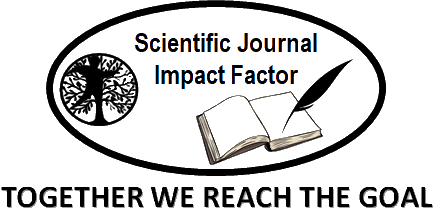Representation of Development in Documentary Films
Abstract
An examination of the study of the depiction of development in documentary films explores the depiction of economic, social and environmental aspects through visual and symbolic narratives. Documentaries play an important role in shaping public perception of development by critically analyzing development processes and outcomes. Utilizing a qualitative approach with content analysis as the main method, the review analyzes various documentary films that focus on development themes. Research findings show that economic development is generally illustrated through infrastructure and technology, while social elements highlight education, health, and environmental issues related to sustainability and ecological impact.
Research findings reveal that representations of development in documentary films often present complex realities, highlighting the challenges and opportunities facing society. Narratives in documentary films often convey critical messages regarding development policies, encouraging viewers to reflect on and challenge existing development paradigms. The use of visualization and symbolism in documentaries is essential in depicting actual conditions on the ground, offering a comprehensive view of the effects of developments.
The conclusion of this research confirms that documentary films not only act as a source of information but also function as a powerful advocacy tool that influences public perception and policy. Recommendations are made to documentary producers to focus more on the intricacies and variations in representing development, and to researchers to undertake broader examination of the role of the media in development. As a result, it is anticipated that the depiction of developments in documentary films may become more comprehensive and all-encompassing, reflecting reality more accurately and fairly.
Keywords
Full Text:
PDFReferences
Borum Chattoo, C., & Feldman, L. (2017). Storytelling for Social Change: Leveraging Documentary and Comedy for Public Engagement in Global Poverty. Journal of Communication, 67(5), 678–701. https://doi.org/10.1111/jcom.12318
Bradbury, J. D., & Guadagno, R. E. (2020). Documentary narrative visualization: Features and modes of documentary film in narrative visualization. Information Visualization, 19(4), 339–352. https://doi.org/10.1177/1473871620925071
Francescutti, P. (2019). La narración audiovisual como documento social e histórico: enfoques teóricos y métodos analíticos. Empiria. Revista de Metodología de Ciencias Sociales, 42, 137. https://doi.org/10.5944/empiria.42.2019.23255
Ghosh, N. (2019). Documentaries and the Development Project: Filmmaking as a Discursive Practice. In Investigating Developmentalism (pp. 115–139). Springer International Publishing. https://doi.org/10.10 07/978-3-030-17443-9_6
Guo, C. M., & Fu, X. (2023). Co-building Viewer's Representation: Animated Documentary Extended by Virtual Reality from the Perspective of Anthropology. 2023 IEEE Conference on Virtual Reality and 3D User Interfaces Abstracts and Workshops (VRW), 1–6. https://doi.org/10.1109/VRW58643.2023.00008
Haines, R. (2019). The Complexities of Development: The South African National Industrial Participation Program in Perspective. In Designing Public Procurement Policy in Developing Countries (pp. 111–139). Springer New York. https://doi.org/10.1007/978-1-4614-1442-1_6
Harman, S. (2022). Who Consumes? In New Mediums, Better Messages? (pp. 212–228). Oxford University PressOxford. https://doi.org/10.1093/oso/9780198858751.003.0012
Irawanto, B., & Octastefani, T. (2019). DOCUMENTARY FILM AS A CATALYST FOR SOCIAL CHANGE: CASE STUDY OF AMBON, ACEH AND BALI. Kawistara Journal, 9(1), 107. https://doi.org/10.22146/kawistara.40986
Katyaini, S., Wessel, M. van, & Sahoo, S. (2021). Representation by Development Organizations: Evidence From India and Implications for Inclusive Development. The Journal of Environment & Development, 30(1), 98–123. https://doi.org/10.1177/1070496520983599
Kim, M. D. (2023). Communicating Development Through US News: Toward Decolonizing “News About Development.” Journalism Studies, 24(6), 738–762. https://doi.org/10.1080/1461670X.2023.2187649
Krauss, J. E. (2018). Representing environment and development – tracing links between drivers, representations and power dynamics in cocoa sustainability and beyond. Journal of Political Ecology, 25(1). https://doi.org/10.2458/v25i1.22043
Kusuma, K. S., & Patidar, P. (2022). Interactive Documentary Practices as an Emerging Tool for Development Communication. International Journal of Information Communication Technologies and Human Development, 14(1), 1–20. https://doi.org/10.4018/IJICTHD.303111
Lewis, D., Rodgers, D., & Woolcock, M. (2013). The Projection of Development: Cinematic Representation as A(nother) Source of Authoritative Knowledge? Journal of Development Studies, 49(3), 383–397. https://doi.org/10.1080/00220388.2012.724167
Li, Z. (2022). The Development of Digital Technology and Changes in Performance Aesthetics. Journal of Chinese Film Studies, 2(1), 149–164. https://doi.org/10.1515/jcfs-2022-0018
Loh, Y. L., & Ali, M. N. S. (2022). Dilemma of Malaysian Indie Documentary Filmmakers. Journal of Communication: Malaysian Journal of Communication, 38(1), 20–42. https://doi.org/10.17576/JKMJC-2022-3801-02
Long, Y. (2022). A Study on the Narrative Structure and Narrative Art of TV Documentary. Highlights in Art and Design, 1(3), 88–90. https://doi.org/10.54097/hiaad.v1i3.3572
Mukherjee, R. (2012). Travels, Songs and Displacements. BioScope: South Asian Screen Studies, 3(1), 53–68. https://doi.org/10.1177/097492761100300105
Patnaik, P. P. (2019). The Art of Showing: Imagining Development in Indian Mediascape. In Investigating Developmentalism (pp. 73–96). Springer International Publishing. https://doi.org/10.1007/978-3-030-17443-9_4
Ramazanova, B., & Abikeyeva, G. (2022). Creativity as a Defining Trend of Evolvement in Modern Documentary Cinema. Central Asian Journal of Art Studies, 7(1). https://doi.org/10.47940/cajas.v7i1.538
Simon, G. L., Wee, B., Chatti, D., & Anderson, E. (2022). Drawing on knowledge: Visual narrative analysis for critical environment and development research. Environment and Planning E: Nature and Space, 5(1), 293–317. https://doi.org/10.1177/2514848620975340
Vossen, M., & Schulpen, L. (2019). Media frames and public perceptions of global poverty in the UK: Is there a link? Communications, 44(1), 59–79. https://doi.org/10.1515/commun-2018-2006
DOI: http://dx.doi.org/10.52155/ijpsat.v45.2.6447
Refbacks
Copyright (c) 2024 Inshan Wicaksana

This work is licensed under a Creative Commons Attribution 4.0 International License.



















